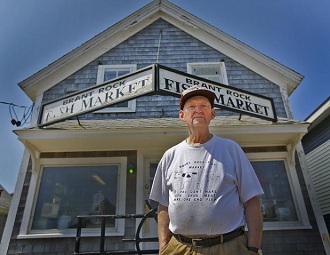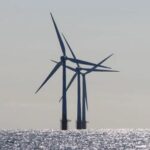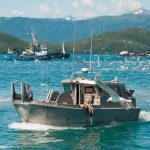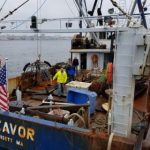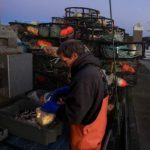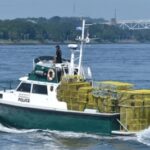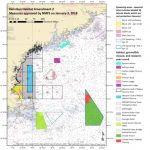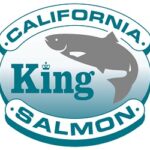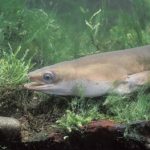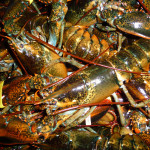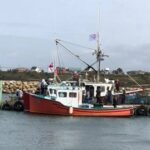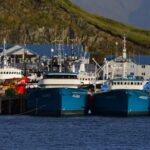Monthly Archives: August 2018
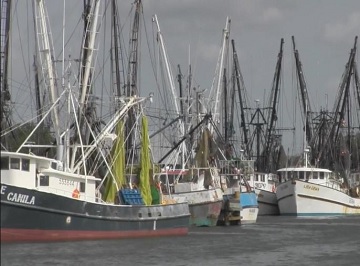
Texas Shrimp Industry Lacks Willing U.S. Workers
It’s two weeks in the Shrimp Season and Texas shrimpers are dealing with another worker shortage. Last year about 20% of the Texas Shrimp fleet stayed in Port from a lack of workers. Andrea Hance is Executive Director of the Texas Shrimp Association based in Brownsville. She told The Texas Standard that about 8 to 10 percent of the state’s shrimp boats are still tied up at docks. “And those boat owners or captains what happened to them is they don’t have enough people to even man the boat, um, so they may only have one other person, well, the boat needs at least three to go out and efficiently operate.” >click to read<11:48
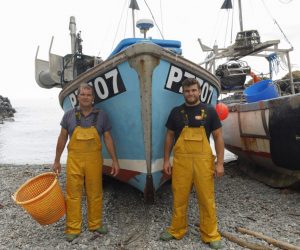
Fishing for a Future After Brexit
Dawn breaks on Newlyn, an industrious fishing harbour in southern Cornwall. Seagulls scream and circle a sardine hauler that has just come in from a night out at sea. As the dusty light floods the water, two fishermen haul tons of their slippery catch into orange crates. It’s been a bountiful trip and it’s only the beginning of the sardine season. Most of this load will go to canneries in France and for these fisherman, a strong trade relationship with the mainland is their livelihood. The sight of a flotilla of boats charging down the Thames just days before the June 23 referendum was arguably one of the most surreal sights of the 2016 Brexit campaign. But while it may have erred on pantomime, it highlighted deeply-felt frustrations shared by fishermen across the UK, whose unhappy prospects—until then—hadn’t made headline news. Photo’s, >click to read<11:01
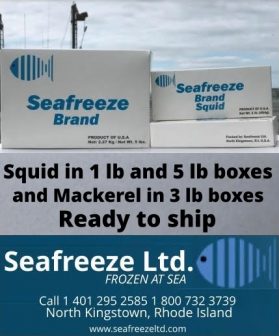
Always Top Quality! Your Seafreeze Ltd. Price Sheet for August 2018 Has Arrived!
Contact our sales team today @ 401 295 2585 or 800 732 273 For the complete price list from Seafreeze Ltd., >Click here< – We are Direct to the Source-We are Fishermen-We are Seafreeze Ltd! >Click here< to visit our website! 09:55

Do seals affect your commercial fishing activity?
Seals eat approx 7% of their body weight when they eat – say 24lbs. Unfortunately, seals don’t necessarily eat the whole fish that they pick from fishermen’s nets – they tend to take a single mouthful from each fish – often to get at the liver – especially with fish like hake. To this end the NFFO are carrying out a survey and encourage all those fishermen who have been affected to take part. This survey is for commercial fishermen in England about their experiences of interactions with seals (seals feeding on catches, damage to gears and entanglement). Your responses will help us better understand the extent of seal–fishery interactions around the country and identify options for non-lethal measures to reduce these interactions. Participation in the survey is voluntary. Video, >click to read<08:58
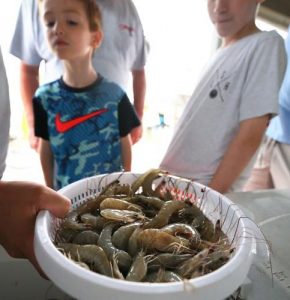
Will South Carolina shrimp season delay pay off with big crop this fall?
The first of the fall white shrimp are coming in — and they’re coming in surprisingly big. Shrimpers and customers are edgily anticipating these next few months as they await the bounty harvest that makes or breaks a season. But whether big shrimp this early is a good sign is anybody’s guess after this year’s opening was delayed and the summer catch was spotty. “Who knows? This has been such a wacky season,” said Rutledge Leland of Carolina Seafoods in McClellanville. Big fall shrimp this early could mean there just aren’t that many of them out there, he said. But Shem Creek shrimper Tommy Edwards thinks the early shrimp are promising after the relentless July storms. Rains promote algae and zooplankton, which shrimp feed on. >click to read<19:47
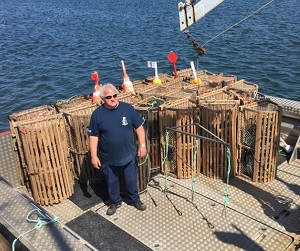
Fishing industry taking steps to protect endangered whales, says association
The president of the Western Gulf Fishermen’s Association says he is proud of the efforts undertaken by spring lobster fishermen to help prevent fishing gear entanglements by endangered North Atlantic right whales. Craig Avery said fishermen went with larger bunches during the fishing season to reduce the amount of rope in the water. Shortly after the season closed, Avery estimates more than 30 boats assisted Fisheries and Oceans personnel in a two-day sweep of the lobster grounds, looking for missing or forgotten lobster gear. >click to read<18:32
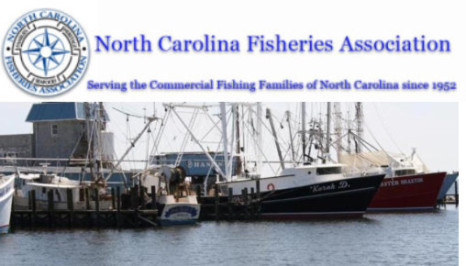
North Carolina Fisheries Association Weekly Update for Aug 3, 2018
>Click here to read the Weekly Update<, to read all the updates >Click here<, for older updates listed as NCFA >click here<13:34
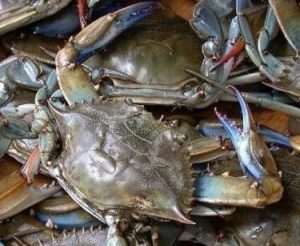
Company accused of diluting Chesapeake blue crab meat with imported crab
Few things say local like the Chesapeake blue crab. It has scuttled its way into Maryland’s tourism slogan and is part of the region’s signature dish, proudly touted on menus and in markets as a taste of the Bay in an era when “eat local” has become the mantra of foodies. But a few years ago, a tipster reached out to authorities with an unsavory allegation: A major Virginia seafood supplier was selling packages of premium Chesapeake blue crab meat cut with cheaper foreign crab. It wasn’t even the same species. In an unusual probe, federal agents fanned out to markets across Virginia, Delaware and North Carolina, scooping up crab meat from Casey’s Seafood and sending it out for the type of DNA analysis more common in rape and murder cases. >click to read<11:23
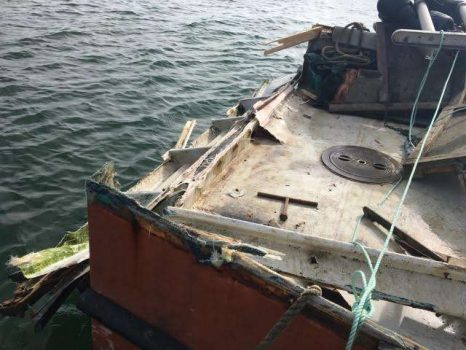
Seven rescued from sinking boat after it collidided with a commercial fishing vessel near Chatham
The 38-foot speed boat and a 40-foot commercial fishing vessel crashed at 6:20 a.m.Saturday morning, sending the speed boat — the Artemis II — 90 feet down to the bottom of the ocean, US Coast Guard Lieutenant John Mansolillo said. The vessels were about 7 miles southeast of Chatham, he said. One of the seven Artemis II passengers fell into the water during the collision, but all seven were rescued by the three-person crew on the fishing vessel, the Great Pumpkin, Mansolillo said. No one was injured. >click to read<09:18
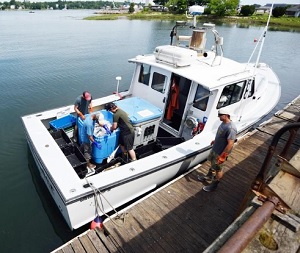
Catching fish is the easy part, Quota system? Not so much
The Finlander is a 36-foot Northern Bay and one of two vessels operated by New England Fishmongers. On a good day, Finlander’s crew will haul in 1,000 to 2,000 pounds of fish, according to Capt. Tim Rider.,,, However, because Rider’s multi-species commercial fishing permit only allows him the ability to catch 103 pounds of cod a year, a quota the Finlander crew can hit in less than a day of fishing, Rider said he is forced to lease additional quota from other fisheries, many of whom are not actively fishing. Since cod quota is leased at between $3.25 and $3.50 per pound, Mondays big catch is virtually a wash.,,, Due to the quota system, Rider says he pays more than half of New England Fishmongers’ annual income to lease quota. >click to read<07:51
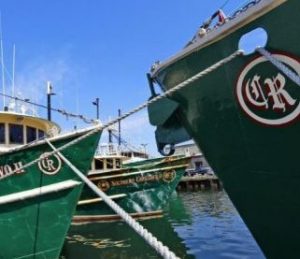
Don Cuddy: Sector reopenings benefit to New Bedford remains to be seen
The news emerged on July 19 that NOAA approved a plan that may now permit some New Bedford fishermen back to work. ,,,So while this decision is a small step forward for the groundfish industry here, it is not yet time to set the church bells ringing since the majority of the inactive quota is owned by inactive fishermen. When the catch share system was introduced in 2010 it gave all permit holders a slice of the pie- the “pie” being a share of the TAC, or total allowable catch, for the annual fishing year, which for groundfish begins on May 1. Individual allocations were based on a permit holder’s catch history over a ten-year period from 1998 to 2008, I believe it was. That effectively means all of the cod, haddock and flounder swimming around on Georges Bank, more than one hundred miles offshore, have someone’s name on their backs, similar to a herd of cattle,,, leased , sold, or traded,,, >click to read<20:53

Celebrating the U.S. Coast Guard’s 228th Anniversary
“You can kick this old service around, tear it to pieces, scream from the house-tops that it is worthless, ought to be abolished or transferred to the Navy, have the people in it fighting among themselves and working at cross purposes and it bobs up serenely bigger and stronger than ever.” – Cmdr. Russell R. Waesche, Sr. As the quote by World War II Commandant Russell Waesche indicates, the evolution of the United States Coast Guard provides a unique study in organizational history. This August (4th) marks the 228th birthday of an agency that has endured through the absorption of other agencies and their missions, personnel, offices and assets. In spite of multiple reorganizations and departmental transfers, the service has expanded in range and mission set. >click to read<
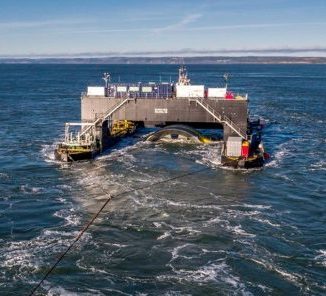
Openhydro receivership leaves murky waters
It’s a tall order for a sheriff: arrest a turbine control centre at the bottom of the. But that’s what a warrant filed with the federal court on behalf of a German shipping company calls on them to do. “It is unusual to have a warrant on a cargo 37 metres below the sea’s surface,” said Marc Isaacs, the attorney who filed the claim on behalf of BBC Chartering Carriers GMBH & Co.KG. “We will have to figure that one out.” There’s a lot of figuring out left to be done as a result of the 1,000 tonne tidal turbine placed on the floor of the Minas Passage by the Ireland-based OpenHydro group of companies that was placed into receivership a week later. >click to read<17:36
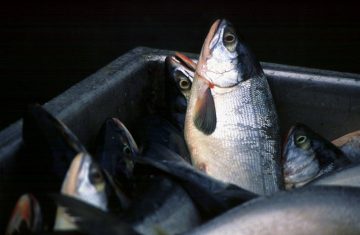
Slow going toward the 39M harvest forecast
Commercial salmon harvests in Prince William Sound topped the 15.4 million mark through July 31, up by three million fish over the previous week, compared to 20.4 million delivered by the same time a year ago. All five species of Pacific salmon are running below the catch rate or the same statistics week one year ago. The pink salmon harvest has reached nearly 11 million fish, compared to 13 million at this time in July of 2016, and this year’s forecast of 32.7 million humpies. Deliveries of sockeyes have reached 1.3 million fish, compared to a year-to-date harvest in 2017 of 1.4 million, and the keta harvest stood at 3.2 million fish, compared to a catch of 5.4 million chums through the same time last year. On the bright side, the Copper River district >click to read<13:47

Florida lobster fishermen testy on trade
Just as they prepare for a crucial harvest in the wake of Hurricane Irma, lobster fishermen in the Florida Keys fear a trade war with China could undermine storm recovery in the island chain. Florida’s nearly eight-month commercial spiny lobster fishing season opens Monday. Keys fishermen had hoped the harvest would help them recoup losses from last September’s hurricane, which made landfall in the Keys with 130 mph winds.,, “Hopefully the tariffs will get figured out because you can’t run your boat and not make money, especially after a hurricane year when you’ve lost so much,” Piton said in a recent interview outside his Key Largo home, where he docks his boat, “Risky Business II.” >click to read<12:49
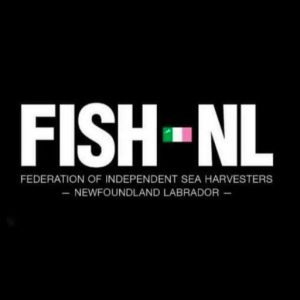
Hearing for FISH-NL Set for August
The president of the Fish, Food and Allied Workers Union says FISH-NL does not have the support to move ahead with its application to represent fish harvesters in the province. FISH-NL, led by Ryan Cleary, is looking for a ratification vote to represent inshore harvesters. FISH NL’s Ryan Cleary says the hearing will either lead to a vote or it won’t, but first he’s hoping all harvesters and their families will attend the presentations. The meeting is happening at the School for the Deaf on Topsail Road in St. John’s. Cleary says it’s finally happening 20 months after they submitted the application. >click to read<11:39

The man who built a better crab trap: Arlington company’s pots stack the decks on reality TV’s ‘Deadliest Catch’
Lance Nylander, company president with 31 years in the industry, obsessed over how to build a better king crab trap. Through grit, trial and error, fair pricing and multi-use trap design, the resourceful entrepreneur and eighth-grade dropout has cornered a crab and fish trap market that has survived complex quota systems, industry rationalization and Chinese knock-offs that were no match for his original. “I quit my competitor, and off I went, started with a thousand units, and it just kind of went from there,” Nylander said of his 1987 business venture. “Four years later, Dungeness Gear Works was number one in the industry.” >click to read<09:32

Testimony: Young fishermen being driven from Long Island fishing industry
A generation of young fishermen are being driven from the industry by an antiquated licensing system that makes it difficult if not impossible to transfer permits, fishermen said at one of several state meetings last week. The New York State Department of Environmental Conservation has hired a consultant from Maine to meet with commercial fishermen across the metropolitan area over the next month to compile proposals for fixing the system.,, Norman Stiansen, a commercial fisherman from Hampton Bays, said his son Peter recently gave up on becoming a commercial fishermen because he couldn’t get the needed licenses. >click to read<08:50
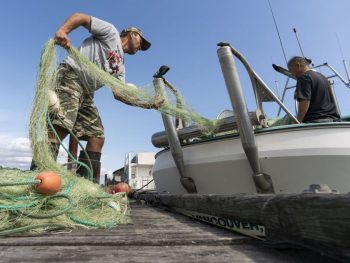
Fraser River sockeye salmon fishing bonanza to start next week
The Fraser River will open next week for its first sockeye salmon run of the season, in a year that is expected to bring in millions of fish for the first time in four years. For local fishermen, it’s better than Christmas. “Oh, we’re super excited,” said Richmond fisherman Roy Jantunen, hours after learning the Pacific Salmon Commission had announced a 24-hour opening from 7 a.m. Wednesday. Jantunen is preparing to go flat out for that full day, without any sleep, to maximize his catch. “It’s great news,” he said. “Last week, we were pulling out the nets and getting them ready. We haven’t used these nets in four years.” >click to read<08:08
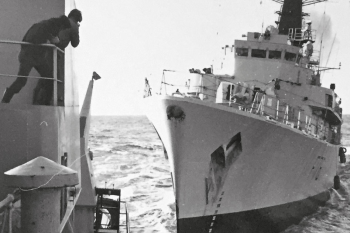
Everything you ever needed to know about fisheries
We are currently going through the most significant legislative reform of the past 40 years; exactly how this will impact fisheries is unclear. There may be much to gain but also… so much to lose. I am too young to remember the ‘cod wars’ between Iceland and the UK fishing fleet (1958-1976), however, throughout my time studying and working in fisheries and marine conservation these times have always struck a chord. They highlight to me the difficulties around managing fisheries and the ever present struggle that seems to exist between the social, economic and environmental issues of the industry. >click to read<19:36
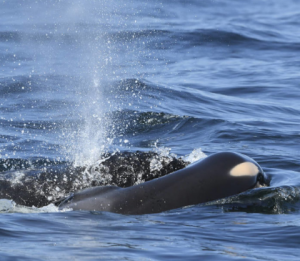
Pinnipeds, not commercial fishing, depriving Orca of salmon
The plight of the orcas has caught the attention of government leaders after a mother orca was spotted carrying her dead baby for nine days in a row; Tom Nelson of 710 ESPN’s “Outdoor Line” podcast has a few ideas for how the state can help save them. Nelson explains that, unlike other types of orca that feast on pinnipeds such as seals and sea lions, the Southern Resident Killer Whales rely on eating salmon to survive. The grieving mother belongs to the Southern Resident pod. There are not enough salmon being produced at hatcheries to feed the Orca in the Puget Sound, Nelson explained, and increasing development has destroyed the salmons’ homes. “That has put a pinch on the diet of these Southern Resident Killer Whale Orcas, >click to read<16:44
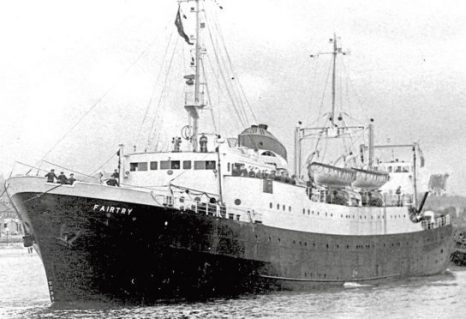
New claim on founding of stern-trawler design
A fishing vessel built in Aberdeen and launched in 1953 is at the heart of an international tug o’ war over who came up with the design. The Leith-registered Fairtry was the world’s first purpose-built stern trawler – powerful vessels often with ramps for hauling heavy catches on to the deck. Their basic design is usually attributed to Sir Charles Dennistoun Burney, an aristrocatic English aeronautical engineer, inventor and Conservative MP who also designed cars, seaplanes and airships. But research by retired engineer Helgi Laxdal suggests the prototype may have been wrongly attributed to ‘Sir Dennis’. >click to read<12:43
With no transgender emoji, #ClawsOutForTrans hijacks the new lobster icon
The lobster has become an unlikely ally in the transgender community’s push to be represented by a pictoral icon, as calls mount for greater online and media visibility. British activist Charlie Craggs created the hashtag #ClawsOutForTrans to protest that the red crustacean was among 157 new emojis launched in February – while the blue, pink and white transgender flag was not. “It is important, when there is so much discussion on the internet around trans issues, that there is an emoji to represent this,” Jennie Kermode, chairwoman of Trans Media Watch, >click to read<11:22
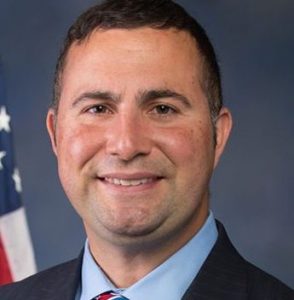
U.S. Rep Darren Soto’s Billfish Conservation Act cuts consumer access to sustainable fresh seafood
The Western Pacific Regional Fishery Management Council is disappointed that America’s seafood consumers may soon be deprived of sustainably harvested domestic marlin products should President Trump sign legislation to prohibit interstate commerce of billfish (not including swordfish) landed in Hawaii, American Samoa, Guam and the Commonwealth of the Northern Mariana Islands. The bill, introduced by U.S. Rep. Darren Soto ’s (D-Fla.), passed the House on June 26 and the Senate on July 30 and is now headed to the president. “It is upsetting, in this era of tackling illegal, unreported and unregulated (IUU) fishing and the $12 billion US seafood trade deficit, that highly monitored US Pacific Island fishing and seafood communities may suffer hardship should this legislation become law,” notes Kitty M. Simonds, executive director of the Western Pacific Regional Fishery Management Council. >click to read<10:34
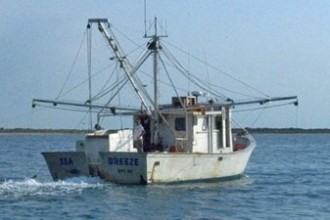
Nort Carolina: New shrimping rules slowly migrate through sea of bureaucracy
Almost two years after it surfaced, a proposal to radically curtail commercial shrimping is crawling through the state’s rule-making process. The North Carolina Wildlife Federation petitioned the Marine Fisheries Commission for the new rules in November 2016, and after modifications, the panel accepted the request on Feb. 16, 2017. Several changes would cripple the shrimp trawling industry, critics say, and would raise the size limit on spot and croaker so high that they would effectively eliminate both fisheries for recreational and commercial fishermen. But the rule-making part isn’t on the horizon yet. >click to read<09:30
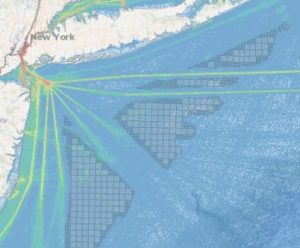
Montauk Trying To Save Long Island Shore From Wind Farms – Residents are against it and need more support.
July 11, at the Montauk Playhouse just beneath the Montauk Manor there was an open town hall meeting featuring representatives of the Bureau of Ocean Energy Management concerning a project to produce 2,400 megawatts of power by 2030 (12 years from now.) The plan is to construct “eventually” clusters of wind farms along the 100-mile south shore of Long Island from 3 to 200 miles out. The project is to start off Montauk. The large hedge fund putting up a reported $560M has tried to frame the debate as “commercial fishermen worried about their fishing grounds versus clean wind power energy,” but that just is not the case. >click to read<07:53

Hunters demand quota to cull thousands of seals and sea lions to save salmon population along B.C.’s coast
The Chief of Haida Gwaii First Nations is calling for a hunting quota on at least 3,000 seals and sea lions in his community and along the west coast of B.C. to help repopulate the critically low salmon stocks. The newly-established Pacific Balance Pinnipeds Society led by president and Chief Roy Jones wants Fisheries and Oceans Canada to establish an “annual harvest quota” on seals and seal lions. “It would be nothing to take probably 3,000 seals out Haida Gwaii, maybe 1,500 to 2,000 sea lions, because the populations are crazy up here,” said the 67-year-old Chief and retired fisherman who grew up watching his father and uncle hunt seals. >click to read<22:43

Halibut catches light so far
As of Wednesday, 27.7 per cent of Prince Edward Island’s 2018 halibut quota had been landed. The fishery has been open on Wednesday and Thursday s for the last three weeks. It closes after today and will reopen in three weeks’ time, again running on three consecutive Wednesday and Thursdays.Michel MacDonald, co-chair of the P.E.I. Fishermen’s Association’s Groundfish Advisory committee describes the fishery in the eastern end of the Island as being slow, so far. >click to read<20:30

Why Maine fishermen may be losing their knowledge of the sea
Maine fishermen have a long history of being involved in fisheries management. Communication between harvesters and policymakers has been instrumental in the development of rules and regulations that have helped to sustain the region’s coastal fisheries—from clams to alewives to lobsters. In part, this success results from the deep understanding of the natural environment held by fishermen. “Local ecological knowledge” is a term used to describe the collective perceptions held by a particular group about their environment, resulting from the transmission of cultural knowledge from one generation to the next, combined with regular and persistent interactions between people and the environment. >click to read<19:47






